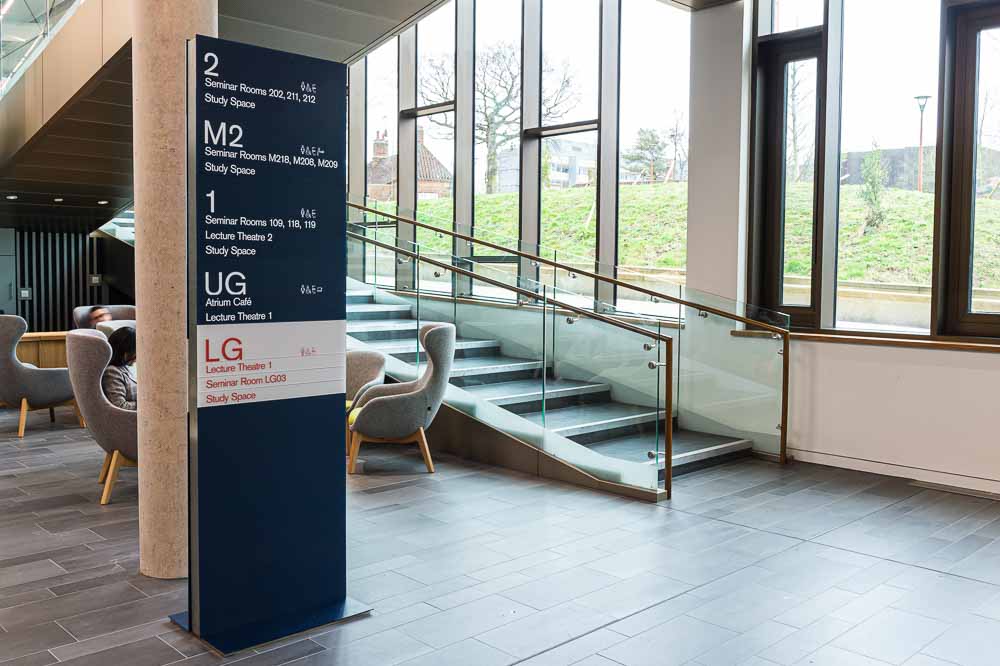Signage design is often a key element of an overall wayfinding strategy, with a system of interconnected signs that allow a site user – whether they be a regular attender, like an employee, or a visitor – to navigate the site with ease.
Wayfinding at large sites may need to include both foot visitors and vehicles and should be simple and easy to read so that people can navigate quickly and without having to decipher those instructions from a mass of other information. Good wayfinding strategy is composed of a number of fundamental principles. The principles come from research carried out by human psychologists and others who study how humans comprehend and navigate in the physical environment. Principles for effective wayfinding include:
Create an identity at each location, different from all others.
Use landmarks to provide orientation cues and memorable locations.
Create well-structured paths. You do not want the visitor to have to transverse
Create regions of differing visual character
Don’t give the user too many choices in navigation
Use survey views – hand a vista or map to the visitor so that they can visualise where they need to be going
Provide signs at specific decision points to help wayfinding decisions – these will include junctions, stairways and different wings.
Use sight lines to show what’s ahead and allow the visitor to make a decision – based on the information presented to them – ahead of having to make that decision.
To be able to do that effectively requires a strategy, determined at the outset, so that the signage allows people to find where they are going, but does not burden them with too much information. It must also be stressed that just by adding signs to walls and doors, you are not creating a wayfinding strategy that solves the challenges of effective wayfinding. In order to do that, you need to appreciate that you are actually delivering an experience that is defined as both simple and flawless, allowing a person to find exactly where they want to go with the minimum of fuss.
An effective wayfinding strategy should pinpoint the key areas that people will navigate to and work backwards to the surrounding key nodes, considering how users navigate from one area to another. The signage scheme can then compliment the wayfinding strategy, by making use of text, colours and pictograms in the most prominent areas to direct users around a building. As part of a wayfinding strategy, signage should follow some key principles:
Is it a clear communication system with concise messaging and a logical sequence?
Is it fully inclusive to allow people to use it effectively? For example, braille systems.
Are there clearly set out decision points and locations where users have a choice of paths to take?
Are the lighting conditions conducive to good wayfinding?
Is there a clustering situation where signs may not be readily readable due to conflicts with other signage?
Wayfinding strategy is an essential part of effective signage in buildings and outside spaces. The mark of a well-designed wayfinding scheme is one that allows the user to admire the design aesthetics without being aware or distracted by the directional decisions that need to be made.



